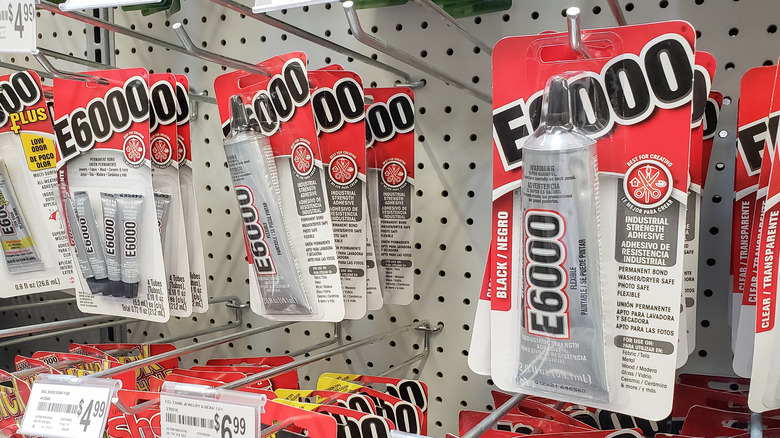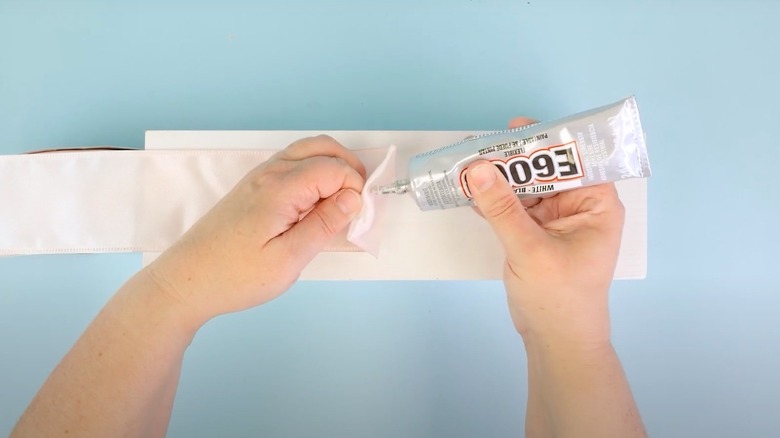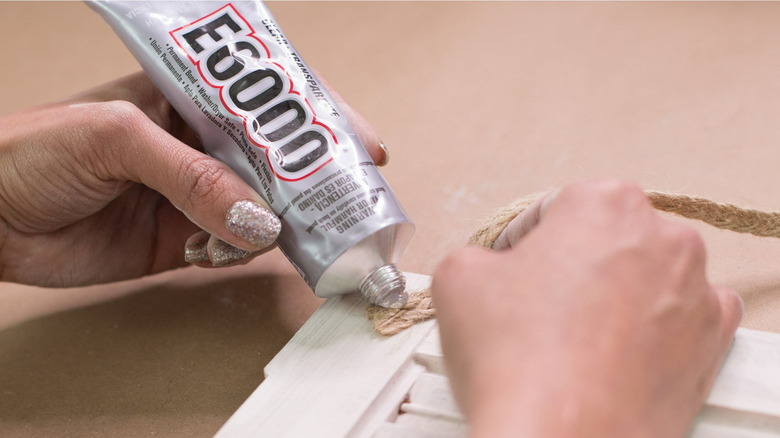Why You Should Keep E6000 Glue In Your Home (& What To Use It For)
We may receive a commission on purchases made from links.
If you do enough home repair or DIY projects, you will sooner or later find yourself in need of some good old glue. It's a rite of passage to make a frantic drive to the store in search of something stronger than Elmer's to attach something that no nail or screw can fix. Instead, you might want to just keep a high-quality glue on hand: E6000. E6000 is a mainstay in DIYers' toolkits for many reasons — it can bond to many different materials and is stronger than superglue or hot glue.
Made by the company Eclectic Products, E6000 is an industrial-strength glue that comes in clear, black, and white. You can find it at any home improvement store, craft store, Walmart, or Target for under $5 a tube. Aside from being strong, E6000 has some characteristics that make it especially versatile. It's flexible, so it doesn't crack with movement; it can stretch up to seven times its original size without losing shape. You can paint it, wash it, dry it, or put it through extreme temperatures without negatively affecting the glue. In other words, there are a ton of different ways to use this product, including some that you might not have thought to use glue for before. Here's what to use E6000 for, what not to use it for, and some hazards to keep in mind.
Perfect ways to use E6000 and how to apply
E6000 bonds to wood, fabric, plastic, ceramic, metal, glass, leather, rubber, concrete, and fiberglass. That's a lot of materials, so you'll find E6000 recommended in a wide range of DIY projects. For example, it's popular for jewelry-making and crafting; you can use it to attach embellishments to home decor projects, like adding beads to a mason jar for a creative storage solution.
E6000 also has a strong enough bond for larger, more robust uses. It comes in handy when you're working with unconventional materials that you can't easily attach to each other without glue. Use it to build an affordable closet shoe rack out of metal racks and zip ties, or to make a Dollar Tree plant hanger with door hooks and a wooden plank. You can also use E6000 for minor repairs, like a cracked planter or chair. One creative way to work with it is to shape it after it dries, cutting out shapes from it similar to an epoxy or resin.
To use E6000, clean and dry the surfaces that you plan to bond together. You may also need to roughen or sand them to help the glue adhere. Then just trim or puncture the tip and apply it to the surfaces before attaching them. It's self-leveling and takes 24 to 72 hours to fully cure.
The risks and limits of E6000
There are some things to keep in mind when using E6000. It can be a bit goopy coming out of the squeeze bottle, and it's best to clean up any spillage immediately so it doesn't harden and cure. Use acetone or a citrus-based solvent to clean up uncured glue. (Worst case scenario, you can scrape away glue after it cures, but that may be more tricky.) It can be hard to open the tube again if any glue gets stuck in there, so Eclectic Products recommends putting some petroleum jelly on the threads of the tube. As with most industrial glues, you should avoid getting it on your skin, and use it in a well-ventilated area.
E6000 also isn't ideal for all surfaces. Avoid using it on styrofoam, paper, or certain plastics like polyethylene, polypropylene, or polystyrene. With styrofoam, for example, E6000 eats straight through the material. Also, because the finished glue will be somewhat flexible, it may not be the most secure adhesive for materials that are already flexible themselves. Lastly, keep in mind that if you plan to use E6000 on outdoor projects, there's a special type for that called E6800 — it's UV resistant, so it won't yellow or crack in the sun.


